Agritech
Revolutionising Agricultural Ground Support Vehicles From Field to Fridge
Agriculture Needs to Transform
The application of Evie Autonomous Agricultural Technology ( agritech ) is used to make the farming process easier, produce food more efficiently and monitoring the food supply chain from field to fridge.
Our concept turned creation for autonomous agritech vehicles is aimed at mapping, driving, and monitoring. Just like a person it can see, feel, control and communicate, giving farmers a reliable tool to ease the workload. This means that farmers have more time to focus on other areas and tasks, boosting their productivity and profitability.
Farming is laborious with long days and long nights, our technology can reliably automate a whole range of vital farming tasks, improving safety and mental health.
EVIE’s Small Electric, Automated Tractors Unleash Productivity and Address Labour Shortages with Low-Risk, Low-Cost Solutions
Small EV automated tractors offer huge potential to overcome labour shortages, increasing agricultural productivity whilst being a low-risk and low-cost solution to implement.
Such technologies can allow time-consuming and repetitive, but crucial farming work to be completed with minimal logistics around the clock. Almost silent EV tractors are able to run as long as needed, weeding, spraying and sowing arable crops, whilst farm labour can be focused elsewhere, still remaining connected.

By creating lightweight small autonomous tractors to swarm around farming structures, introducing a new way to farm. This will ensure food production is more accurate, sustainable, and profitable and lead us to a net zero future for our planet.
Small EV automated tractors offer huge potential to overcome labour shortages, increasing agricultural productivity whilst being a low-risk and low-cost solution to implement. Such technologies can allow time-consuming and repetitive, but crucial farming work to be completed with minimal logistics around the clock. Almost silent EV tractors are able to run as long as needed, weeding, spraying and sowing arable crops, whilst farm labour can be focused elsewhere, still remaining connected though.
Global Agriculture Revenue
%
More Food is Needed by 2050
%
Global Workers Employed by Agriculture
According to a recent study by the National Farmers’ Union, the UK is facing a shortage of 500,000 farm workers. This shortage is being driven by a number of factors, including retirements, the decline of the farming industry, and the lack of interest in the profession among young people. The average yield of wheat in the UK has decreased by 15% in the past 4 years. This decrease is heightened by climate change, pests, and diseases. The average age of a farmer in the UK is 59 years old, and this is the highest average age of farmers in any developed country. The ageing of the farming population is a major challenge for the agricultural industry, as it means that there are fewer young people entering the profession.
- The global agricultural industry is worth over $5 trillion.
- The agricultural industry employs over 1 billion people worldwide.
- The average cost of a farm worker is over $10,000 a year.
- The average yield of wheat in the UK is 3.5 tons per hectare.
- The average age of a farmer in the UK is 59 years old.
Current farming processes see vast amounts of farm labour time unnecessarily used navigating around the farm and add this to the slow process of the farmer sowing seeds, cutting grass, spraying crops and ploughing the ground and it is easy to see the need for our autonomous solution.
The concept of a future farm would see these current processes evolve into fully autonomous operations. By implementing small EV tractors with autonomous technology, new possibilities are endless, all leading to a safer and more productive, profitable and efficient farming environment.
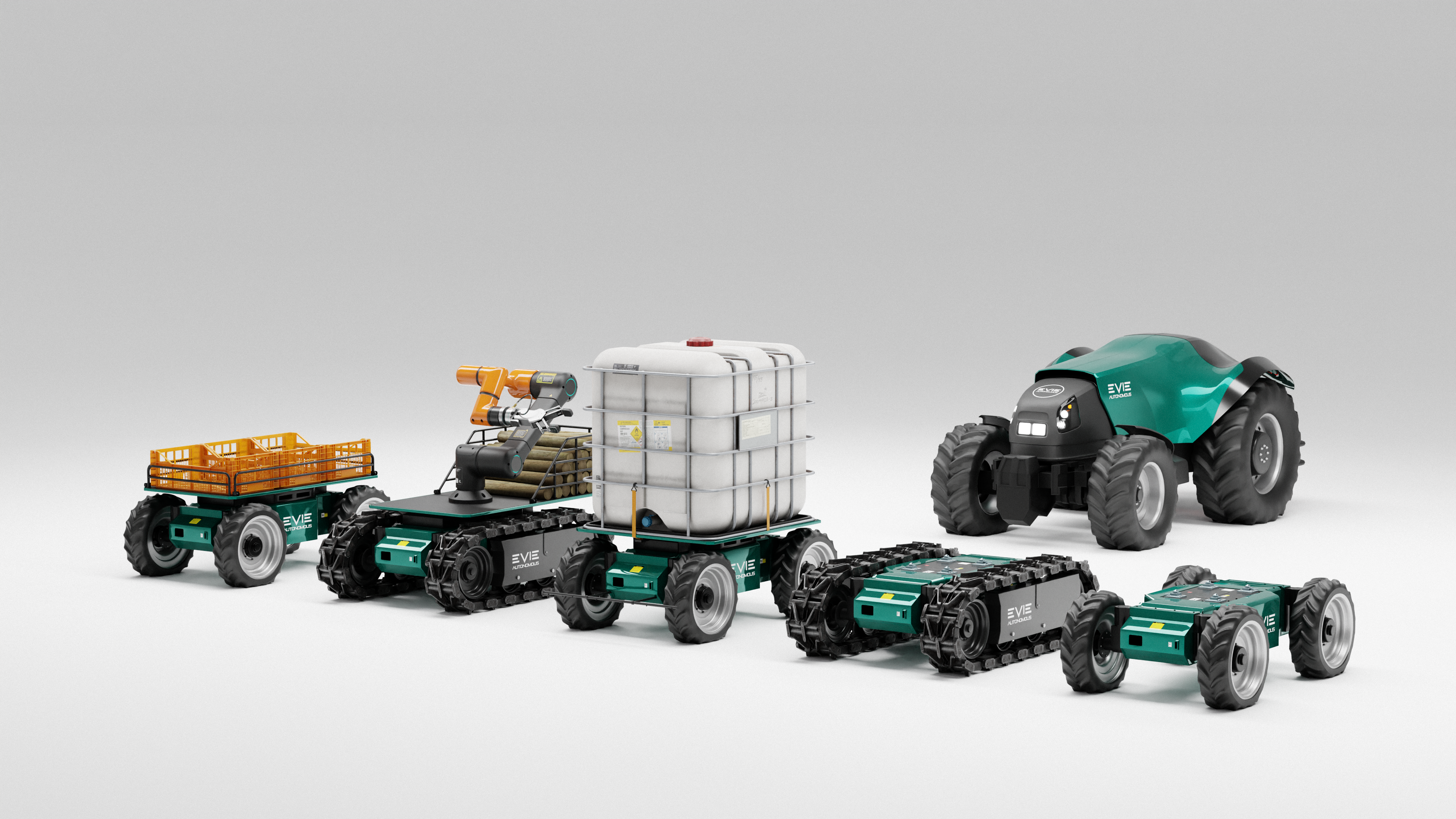
AI Weed Spraying
Green to Brown
Traditional weed control methods involve spraying herbicides over entire fields, regardless of whether there are weeds present. This can lead to the overuse of herbicides, which can pollute waterways and harm wildlife. Green-to-brown AI weed spraying, on the other hand, only sprays herbicides on weeds, which can significantly reduce herbicide use. This technology works by using AI to analyse images of crops to identify weeds. The AI software is trained on a dataset of images of weeds and crops, and it can learn to distinguish between the two. Once the AI software has identified a weed, it can send a signal to a sprayer to apply herbicide to the weed.
Green to Green
Green-to-green AI weed spraying, on the other hand, can identify weeds even when they are the same colour as the crop. This is because it uses a variety of features to identify weeds, such as leaf shape, size, and texture. This makes it a more accurate and precise way to identify weeds, and it allows farmers to apply herbicides more precisely.
Overall, green-to-green AI weed spraying is a more advanced and accurate technology than green-to-brown AI weed spraying, however, the use of both grants a much more precise, accurate and efficient operation. It has the potential to provide farmers with a number of benefits, including reduced herbicide use, improved crop yields, and protection of the environment.
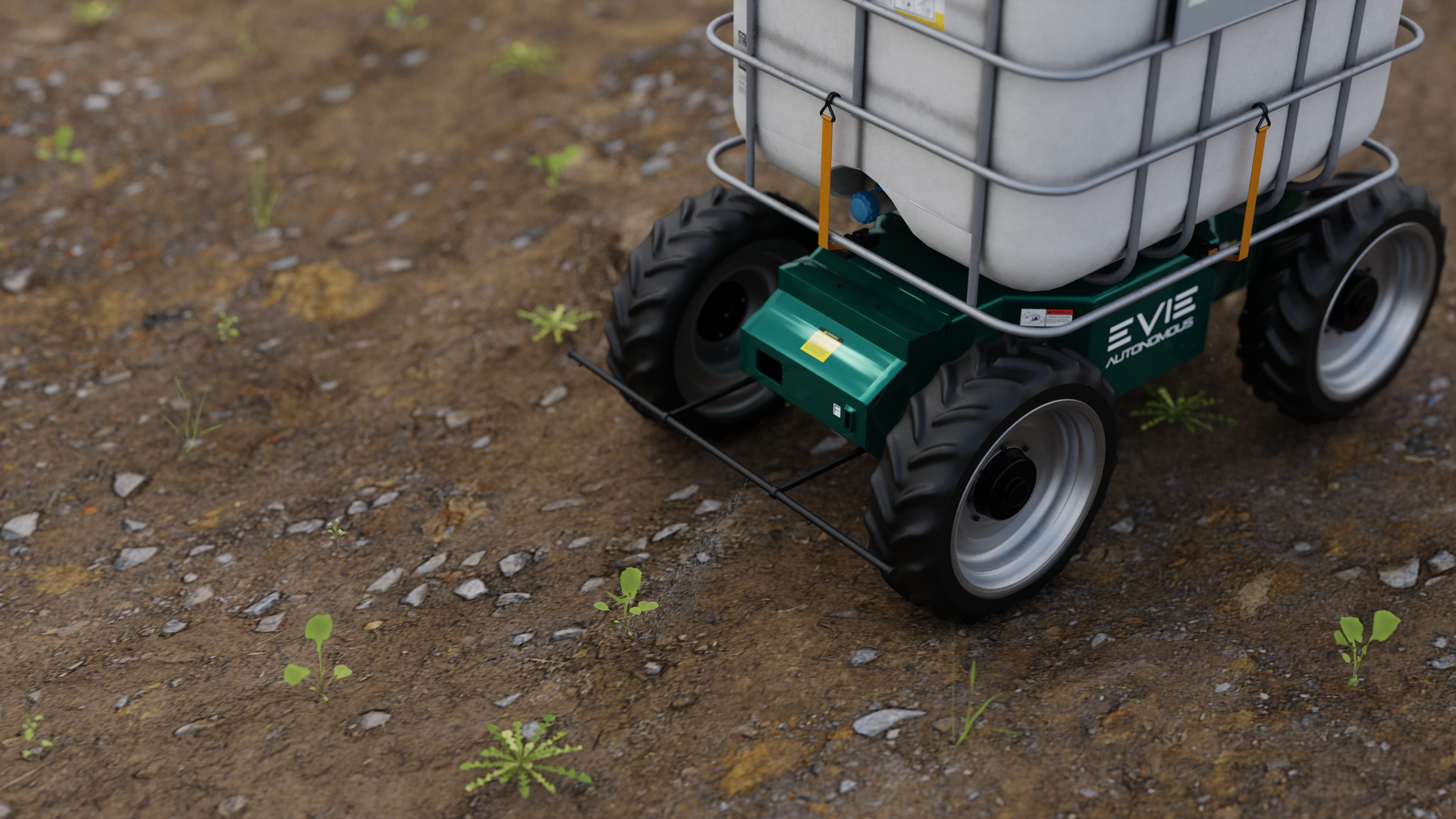
56% of UK land is farmed, and given the current climate and labour shortages, farming has become exceptionally harder work, giving little time for agricultural workers to do anything. Built by the innovators of technology, for the farmers of the land, to feed the mouths of the hungry – our technology provides solutions for some of our largest current problems.
A safer and more productive, profitable and efficient farming environment
A future farm would see current processes evolve into fully autonomous operations
The Future of Farming
EVIE’s mission is to change and modernise global farming, return higher profits whilst maximising yields to help with the world food shortage and abolish labour obstacles.
These core issues, with an increasing population, creates one of the biggest crises of our generation and it is only set to get worse.
By creating lightweight small autonomous tractors to swarm around farming structures, we introduce a new way to farm.
This will ensure food production is more accurate, sustainable, and profitable and lead us to a net zero future for our planet.
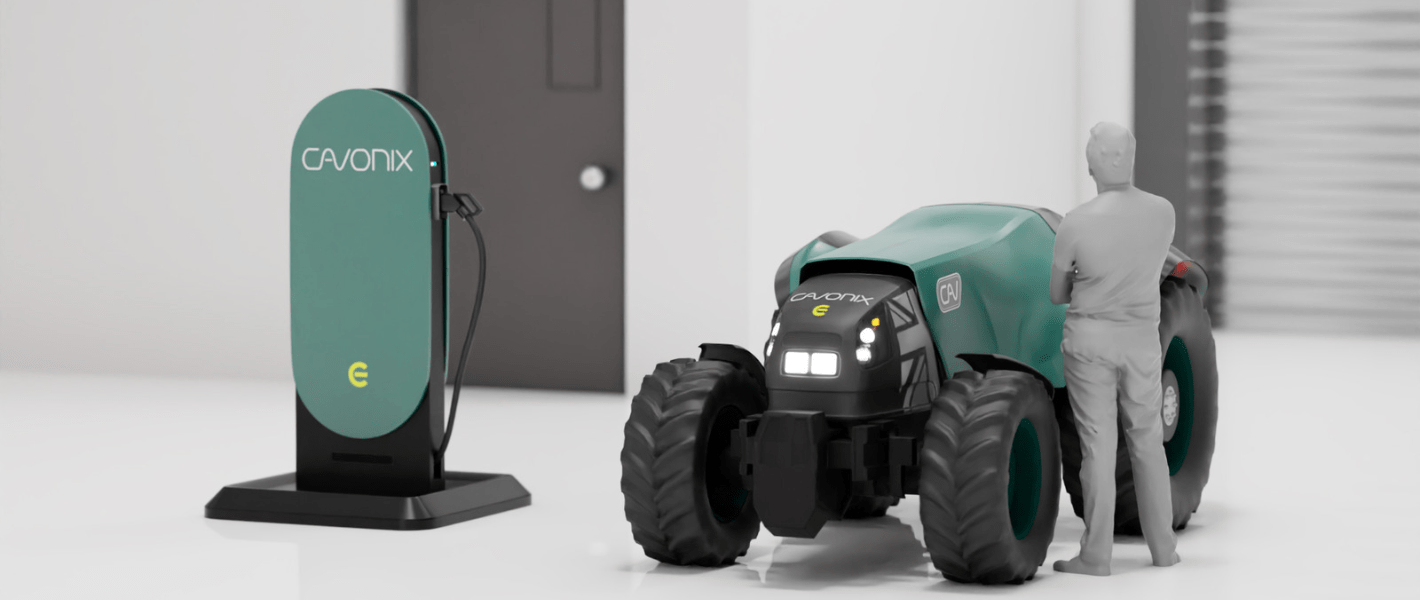
Autonomous technology has the potential to be ground-breaking, (pun intended), for agricultural labour. Electric autonomy bids farewell to billowing clouds of black exhaust filling the atmosphere, morning wakeups to find that meticulously planted seeds have been dug up by the midnight marauding rabbits and mice, and biblical floods sweeping through the fields ruining a month’s dedicated effort.
Leading experts in technology development are committing time and money into the belief that the future of farming is here. These electric systems offer 75% reduction in energy costs that are beginning to take their toll on farming families small and large; the animal/crop genetics, chemical equipment and organisations are taking over – and taking the climate with them.
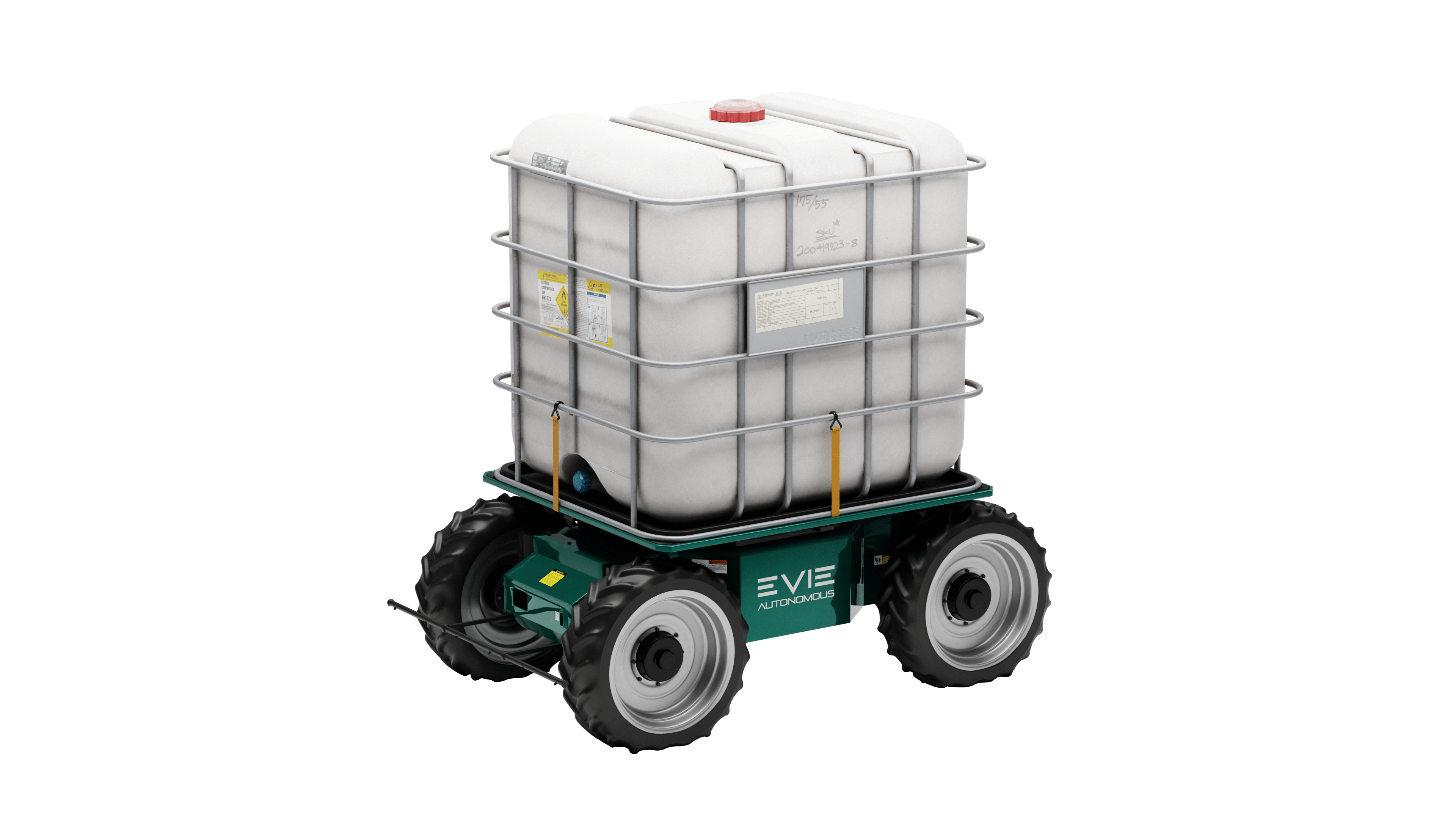
- Fully autonomous with precision localisation +-10mm
- Wireless supercapacitors for maximum uptime
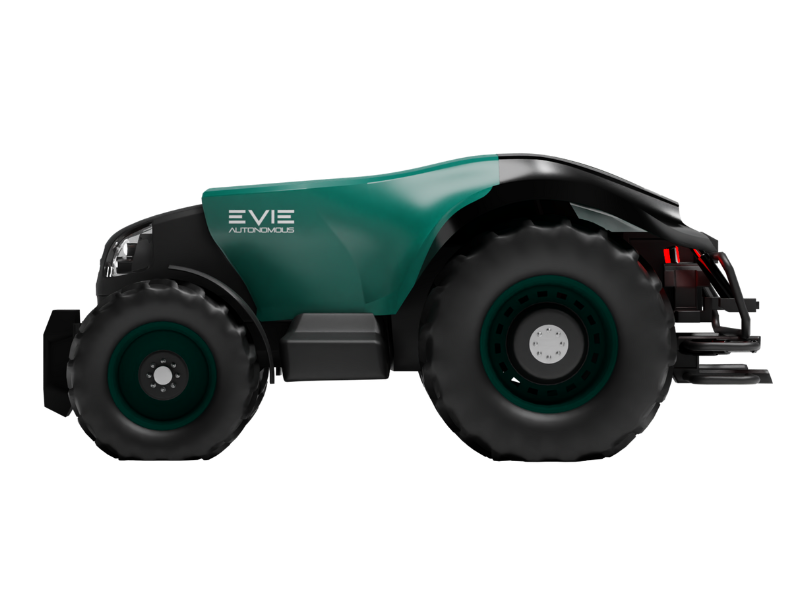
- Fully connected with fleet management just-in-time movement in portside and industrial applications
- 4-wheel drive & steering
- Off-road rugged traction
Connected Markets
Robotics
Learn more about the future of robotics
